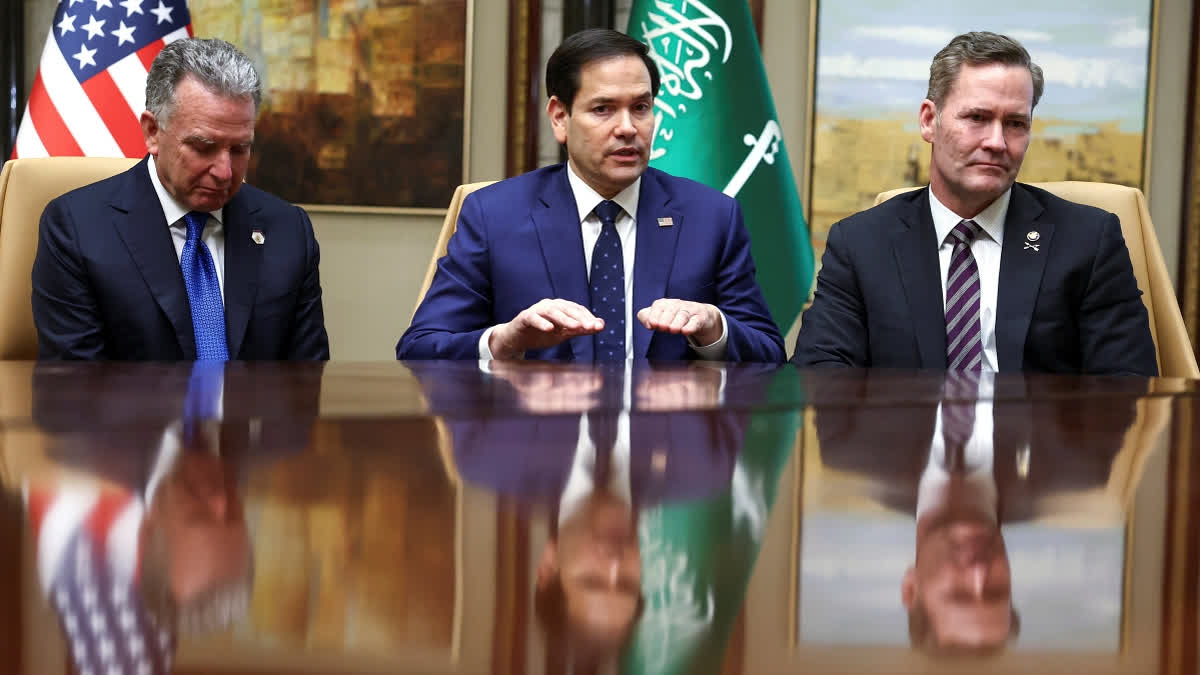Riyadh:Top US and Russian officials had their most extensive high-level engagement since Moscow sent troops into Ukraine almost three years ago, meeting for nearly four hours Tuesday in Saudi Arabia as President Donald Trump sought to advance his goal of ending the fighting in Ukraine and mending ties with Moscow.
The delegations led by U.S. Secretary of State Marco Rubio and Russian Foreign Minister Sergey Lavrov said the discussions were a good first step.
They agreed to set up teams to look into restoring staffing at the U.S. and Russian embassies in Moscow and Washington which have been decimated by a series of tit-for-tat diplomatic expulsions. The effort is aimed at using those channels to support Ukraine peace negotiations and to explore ways to restart economic and global cooperation.
A Russian official pointed to possible joint energy ventures. However, the rapprochement may come at a cost to the transatlantic alliance of the U.S. and Europe and significantly damage Washington's standing with Ukraine as well as with other nations counting on U.S. leadership in NATO and elsewhere for their security and protection.
During former President Joe Biden's administration, the U.S. and Europe focused on isolating Russia and defending the post-World War II international order.
Here's a look at the meeting and what comes next:
Reestablishing tattered diplomatic relations
First on both countries' list of accomplishments was an agreement to end what has been years of dwindling diplomatic relations that hit a post-Cold War low point after Russian President Vladimir Putin sent troops into Ukraine in February 2022.
The meeting, which came just a week after Trump spoke to Putin by phone, was the first substantive face-to-face discussion between the nations' top diplomats since former Secretary of State Antony Blinken met Lavrov in Geneva in January 2022 in an unsuccessful bid to prevent the Ukraine conflict.
Lavrov said after Tuesday's talks that the sides agreed to fast-track the appointment of new ambassadors, adding that senior diplomats from the two countries will meet shortly to discuss specifics related to "lifting artificial barriers to the work of the U.S. and Russian embassies and other missions."
In reality, the decimation of the U.S. and Russian embassies personnel began well before Russian troops rolled into Ukraine in 2022, starting after 2014 Russia's annexation of Crimea that was seen as illegal by most of the world during the Obama administration, which ordered several Russian offices in the U.S. to close.
It picked up steam after the 2018 poisoning in Britain of an exiled Russian spy and his daughter, which British authorities blamed on Russia, and resulted in mass expulsions of diplomats and the closure of numerous consulates in both countries and Europe.
Asked by The Associated Press if the U.S. now considered those cases closed, Rubio declined to say but said it would be impossible to get a Ukraine peace agreement without diplomatic engagement.
"I'm not going to negotiate or talk through every element of the disruptions that exist or have existed in our diplomatic relations, on the mechanics of it," he said. Bringing an end to the conflict cannot happen "unless we have at least some normalcy in the way our diplomatic missions operate in Moscow and in Washington, D.C."
Negotiating an end to the conflict in Ukraine
The two sides agreed to set up high-level working groups to begin exploring a negotiated end to the conflict. It was not immediately clear when these teams would first meet, but both said it would be soon.
As to concessions that may need to be made by all sides, Trump's national security adviser, Mike Waltz, who participated in the talks Tuesday, said the issue of territory and security guarantees would be among the subjects discussed.
Rubio said a high-level team, including experts who know technical details, will begin to engage with the Russian side on "parameters of what an end to this conflict would look like."
